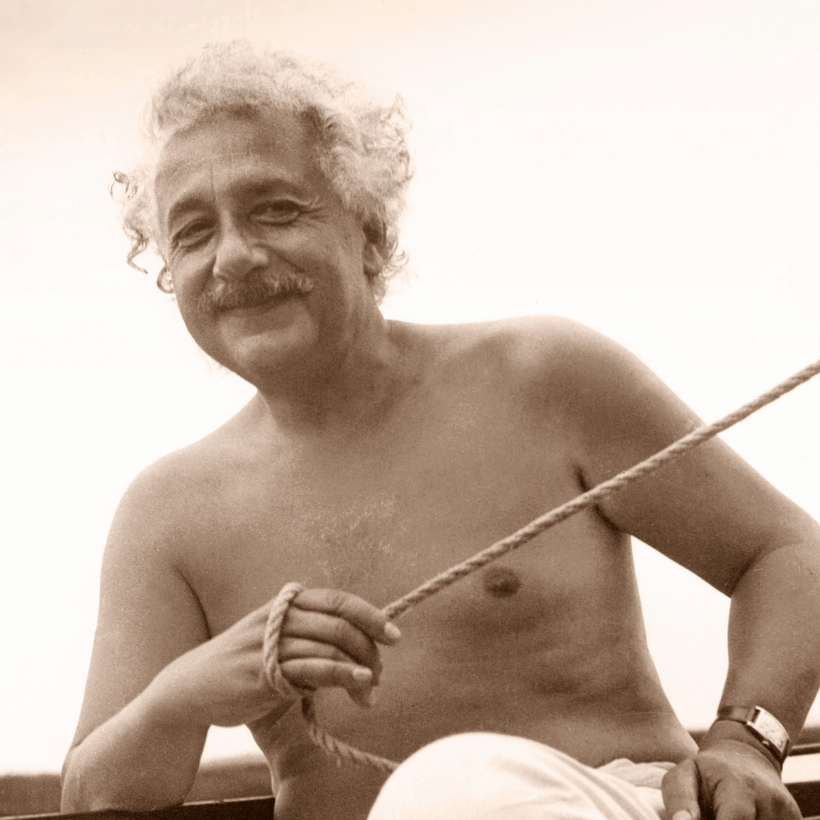“He couldn’t have been like that,” Margaret Thatcher reportedly objected, after seeing the scatologically obsessed character of Mozart in a stage production of Amadeus. But filthy librettos and letters freely document that Wolfgang Amadeus Mozart was exactly like that, Katie Spalding notes in Edison’s Ghosts: The Untold Weirdness of History’s Greatest Geniuses. Thatcher simply refused to let those facts impinge on her idea of the artistic hero.
What was a genius? It feels like a distant and mystifying concept here in Elon Musk’s 21st century, when we’re stuck with mere celebrities, or rich people, or people who have become celebrities by being rich. Who but some miserable reply guys can still hold on, like Thatcher did, to the idea that someone’s gifts might transcend mere humanity?
Officially, Edison’s Ghosts aims to deflate the notion of eminence, to show that the great intellectual heroes of yore were also louts and buffoons, afflicted by failure, folly, and delusion: Albert Einstein had to be rescued at sea dozens of times because he’d made sailing his hobby without learning how to keep his boat upright, or even how to swim; Sigmund Freud did so much cocaine he “started to become convinced that the universe was sending him messages through the appearance of various numbers”; when Ada Lovelace wasn’t inventing the concept of the computer program, she was stealing and pawning her husband’s family jewels, swapping in paste replicas, to cover her compulsive-gambling losses.
Yet there’s something hopeful about a book setting out to tell us that our fabled geniuses were weirdos and goofballs. It supposes that greatness is still real enough to need demystifying. Spalding teases her subjects because, most of the time, she wants to express what was admirable about them.
Maybe not so much in the case of Freud, or of Karl Marx (“by all accounts a pretty shitty friend and husband”), or of Thomas Edison—“a sort of proto-Elon Musk,” getting publicity and industrial clout by appropriating other people’s work, while personally chasing the titular ghosts, “myriads and myriads of infinitesimally small individuals, each in itself a unit of life,” that he thought could survive the death of the person they inhabited. But the overall effect of everyone’s various forms of human benightedness is to make the march of enlightenment that much more impressive.
All that variety makes the book hang together awkwardly in places. Like many of its distractible subjects, Edison’s Ghosts can’t quite focus on one task systematically: some chapters are biographical sketches of an entire chaotic life; others narrate a single quirk or incident. Petty foibles and grave misdeeds get served up in confoundingly similar portions. Early chapters about Pythagoras and Confucius stretch the book’s chronological structure past its breaking point, dealing in legend and apocrypha as much as in documented history.

The writing, steering for irreverence, can swerve into pointless slapstick—does making a joke about Teenage Mutant Ninja Turtles in the chapter on Leonardo da Vinci even count as a joke, since the Ninja Turtles were named after Renaissance masters as a joke in the first place?
Albert Einstein had to be rescued at sea dozens of times because he’d made sailing his hobby without learning how to keep his boat upright, or even how to swim.
Spalding is at her best not as a witticist but as an enthusiast, when the book moves from poking the reader in the ribs to eagerly pointing out this or that engaging idea. Her Galileo chapter briefly abandons its famous protagonist altogether for a lucid, more-than-a-page-long footnote about how rival mathematicians forced their way through 16th-century problem-solving competitions to the discovery of imaginary numbers, and with that the insight that “numbers didn’t have to mean anything geometrically.”
Discussing Benjamin Franklin’s lifelong recklessness with electricity—including zapping himself with a discharge he’d meant to use to kill a turkey, causing “a violent, quick shaking of my body”—Spalding pauses to share the correct posture for avoiding lightning in the open: “Crouch down on the balls of your feet, and put your head between your knees in the classic ‘brace, brace’ position.”
Sigmund Freud did so much cocaine he “started to become convinced that the universe was sending him messages through the appearance of various numbers.”
The story of genius is, after all, the story of curiosity. It may be fun to know that the astronomer Tycho Brahe kept a pet moose and kept that moose drunk all the time, but it’s fascinating to contemplate Isaac Newton, before science had separated itself out as its own field of inquiry, spending “a frankly astonishing amount of time researching what was, essentially, magic” and shoving sharp objects into his eye socket to record what patterns his eye might register.
One more account of what a mess Lord Byron was doesn’t tell the reader much. What lingers is the story of the pioneering meteorologist James Glaisher (not, Spalding concedes, “one of the more recognizable names in this book”) suffering altitude sickness and breaking his instruments while riding a balloon five miles up in the atmosphere in the 1860s—“approximately four and a half miles higher than a standard, calm skies, no-fuss balloon flight will take you today”—only to make a return flight soon after, and, with his pilot Henry Coxwell, soar two miles higher than that, to the edge of the tropopause and the brink of death.
Was that flight, leaving him blacked out at its peak and Coxwell numb-handed on the way down, the work of fools? They returned to Earth knowing something no one had ever known before.

Tom Scocca is the former politics editor at Slate and the editor at Popula


